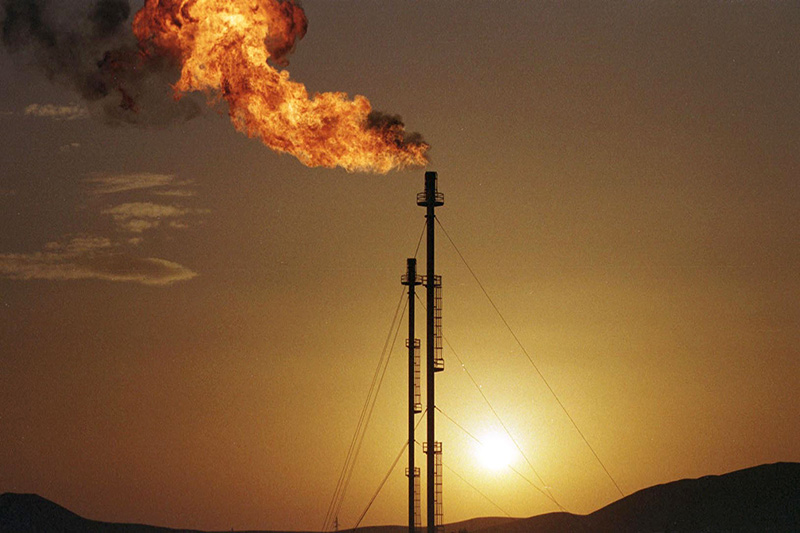Investing.com - Natural gas futures erased gains to turn sharply lower on Thursday, after a report from the U.S. Energy Information Administration showed that natural gas supplies rose more-than-expected last week.
Market participants also continued to focus on near-term weather forecasts to gauge the strength of demand for the fuel.
On the New York Mercantile Exchange, natural gas futures for delivery in October traded at USD3.532 per million British thermal units during U.S. morning trade, down 1.4%. The October contract settled up 0.25% at USD3.582 per million British thermal units on Wednesday.
Prices rose by as much as 1.8% earlier in the day to hit a session high of USD3.648 per million British thermal units, the strongest level since July 26.
Prices traded at USD3.633 prior to the release of the U.S. Energy Information Administration report.
The U.S. Energy Information Administration said in its weekly report that natural gas storage in the U.S. in the week ended August 23 rose by 67 billion cubic feet, above market expectations for an increase of 63 billion cubic feet.
Inventories increased by 64 billion cubic feet in the same week a year earlier, while the five-year average change for the week is a build of 66 billion cubic feet.
Total U.S. natural gas storage stood at 3.130 trillion cubic feet as of last week. Stocks were 235 billion cubic feet less than last year at this time and 45 billion cubic feet above the five-year average of 3.085 trillion cubic feet for this time of year.
The report showed that in the East Region, stocks were 107 billion cubic feet below the five-year average, following net injections of 49 billion cubic feet.
Stocks in the Producing Region were 95 billion cubic feet above the five-year average of 978 billion cubic feet after a net injection of 16 billion cubic feet.
Meanwhile, updated weather forecasting models pointed to cooler temperatures across most parts of the U.S. Northeast for the first week of September, weighing on near-term demand expectations.
Forecasts originally called for warmer-than-average weather during the period.
Demand for natural gas tends to fluctuate in the summer based on hot weather and air conditioning use.
Elsewhere on the NYMEX, light sweet crude oil futures for delivery in October fell 0.75% to trade at USD109.29 a barrel, while heating oil for October delivery dipped 0.25% to trade at USD3.203 per gallon.
Market participants also continued to focus on near-term weather forecasts to gauge the strength of demand for the fuel.
On the New York Mercantile Exchange, natural gas futures for delivery in October traded at USD3.532 per million British thermal units during U.S. morning trade, down 1.4%. The October contract settled up 0.25% at USD3.582 per million British thermal units on Wednesday.
Prices rose by as much as 1.8% earlier in the day to hit a session high of USD3.648 per million British thermal units, the strongest level since July 26.
Prices traded at USD3.633 prior to the release of the U.S. Energy Information Administration report.
The U.S. Energy Information Administration said in its weekly report that natural gas storage in the U.S. in the week ended August 23 rose by 67 billion cubic feet, above market expectations for an increase of 63 billion cubic feet.
Inventories increased by 64 billion cubic feet in the same week a year earlier, while the five-year average change for the week is a build of 66 billion cubic feet.
Total U.S. natural gas storage stood at 3.130 trillion cubic feet as of last week. Stocks were 235 billion cubic feet less than last year at this time and 45 billion cubic feet above the five-year average of 3.085 trillion cubic feet for this time of year.
The report showed that in the East Region, stocks were 107 billion cubic feet below the five-year average, following net injections of 49 billion cubic feet.
Stocks in the Producing Region were 95 billion cubic feet above the five-year average of 978 billion cubic feet after a net injection of 16 billion cubic feet.
Meanwhile, updated weather forecasting models pointed to cooler temperatures across most parts of the U.S. Northeast for the first week of September, weighing on near-term demand expectations.
Forecasts originally called for warmer-than-average weather during the period.
Demand for natural gas tends to fluctuate in the summer based on hot weather and air conditioning use.
Elsewhere on the NYMEX, light sweet crude oil futures for delivery in October fell 0.75% to trade at USD109.29 a barrel, while heating oil for October delivery dipped 0.25% to trade at USD3.203 per gallon.
